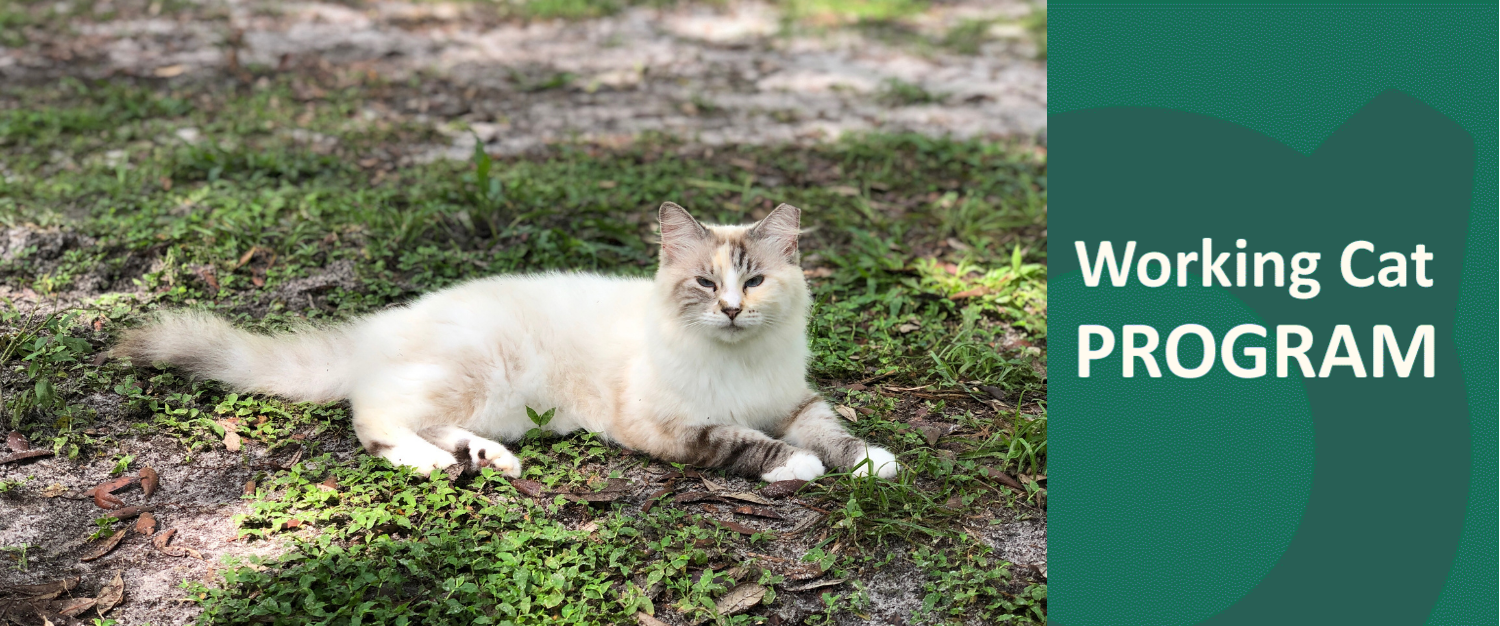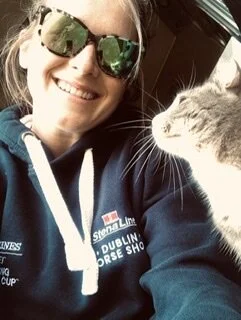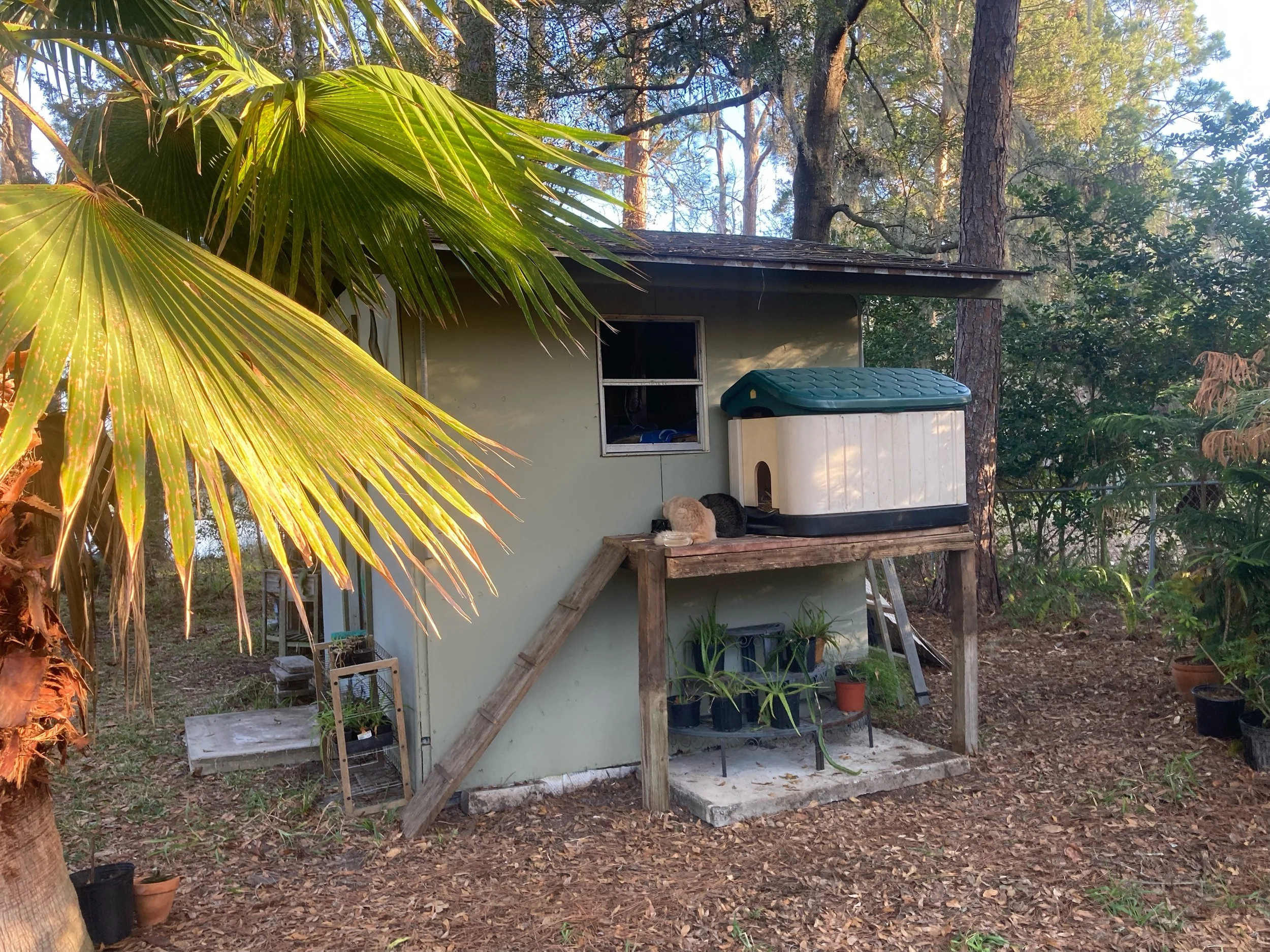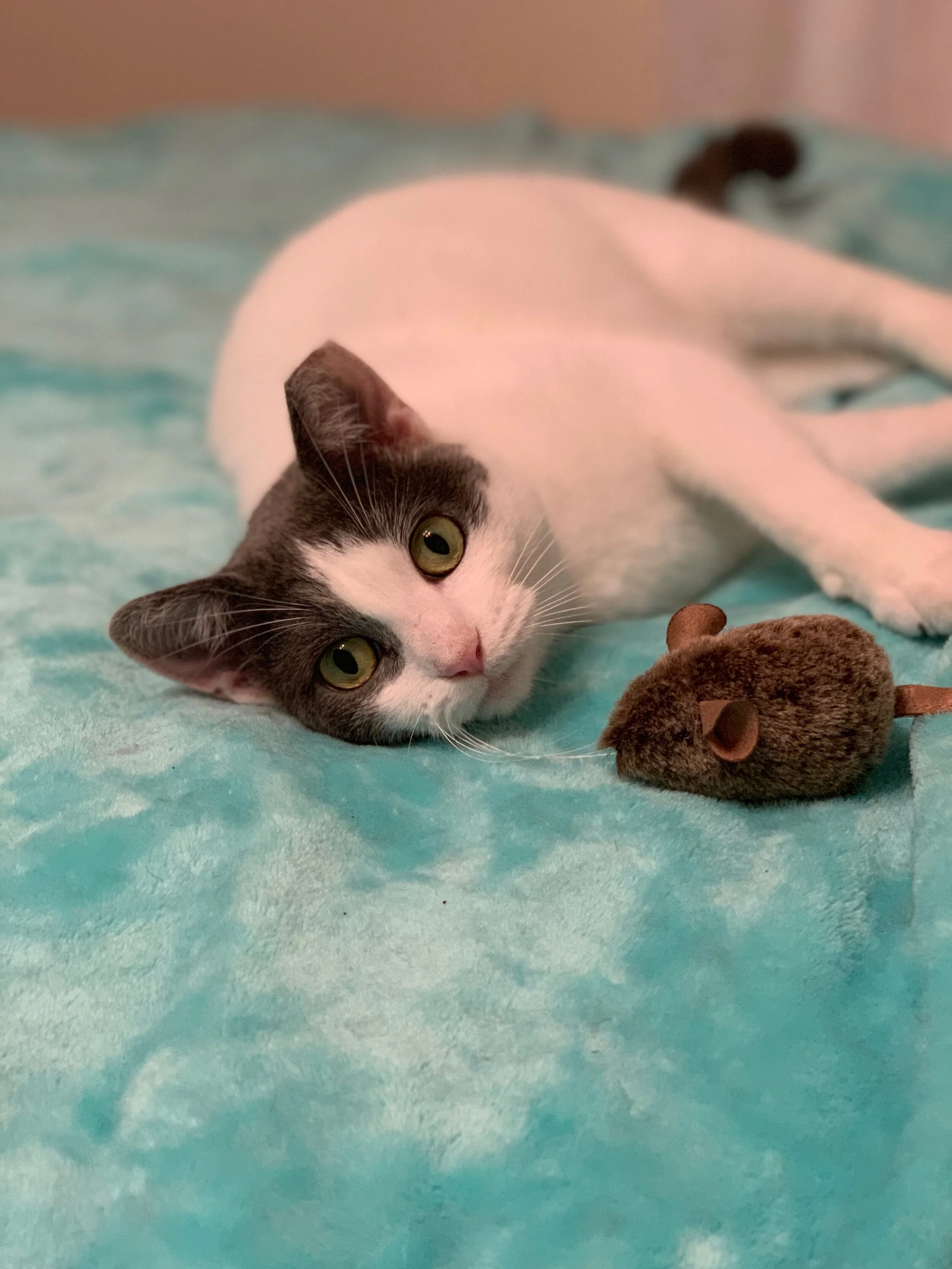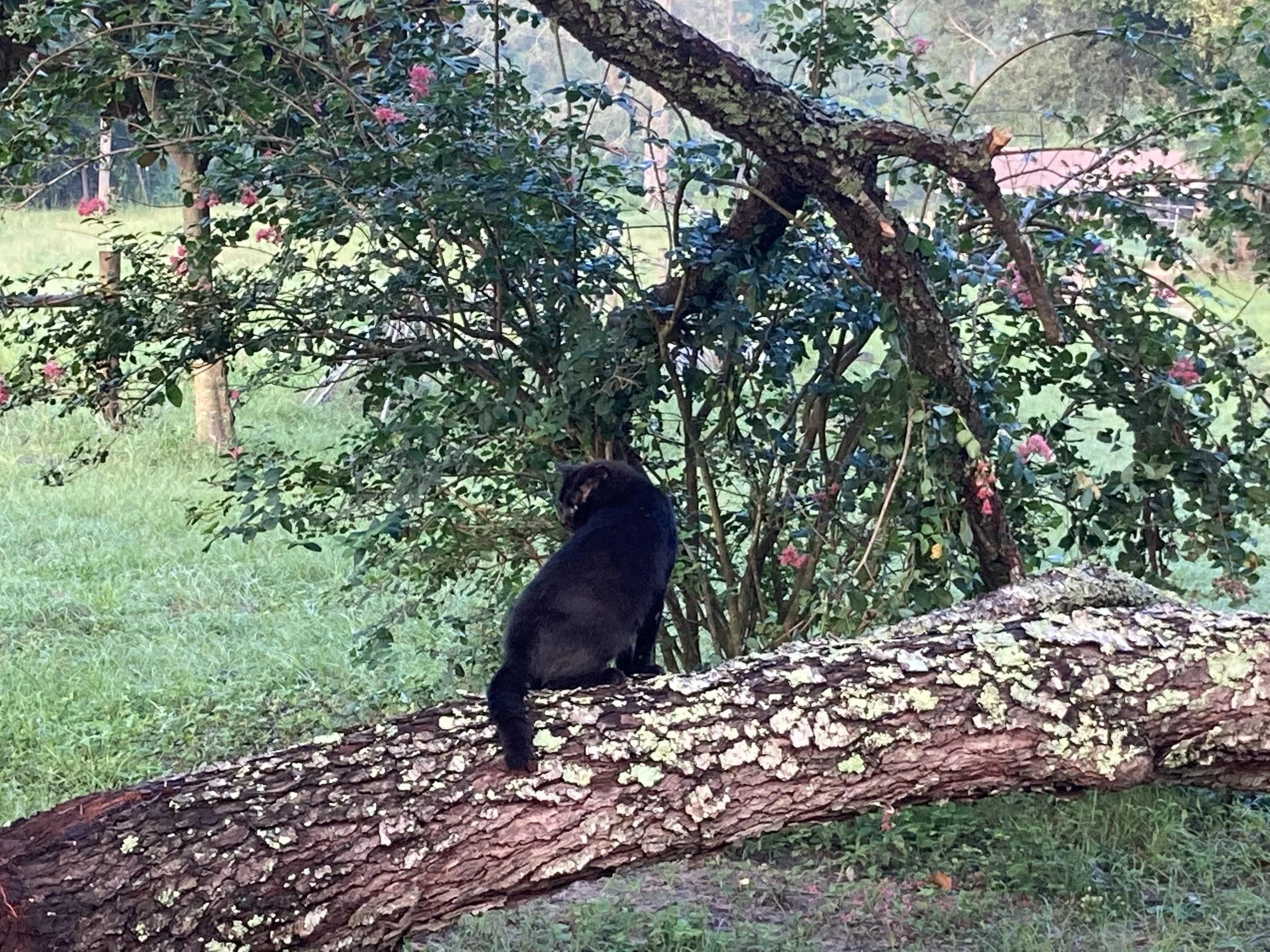About the Working Cat Program
Operation Catnip works with Alachua County Animal Resources and other local rescue and shelter partners to place un- or under-socialized cats in non-traditional homes as Working Cats!
Our Working Cats mostly come from the euthanasia list of animal control and this program serves as their only live path out of impoundment. These cats cannot be adopted as traditional pets, and for one reason or another, cannot be returned to their original outdoor habitat, which is always preferable. Relocation is not always successful and should always be a last resort when it comes to feral cats.
Without this program, feral cats would be euthanized because of their temperaments. Instead, these cats are sterilized, vaccinated, microchipped, and adopted to families who appreciate Working Cats just as they are and can provide a safe, appropriate environment such as a barn, stable, shed, garage, or warehouse.
The Working Cat Program is a win-win for both the cats and adopters! Cats enjoy safe outdoor homes with shelter and a caregiver (and live release from the shelter!), and adopters enjoy having healthy, sterilized cats that can happily provide green pest control and aloof companionship!
We’re published!
Read about our research study on the Working Cat Program here: Journal of Shelter Medicine and Community Animal Health
The Adoption Process
Our cats are housed on-site in an outdoor Catio. This provides them with safe access to outdoor stimuli, where they are also protected from the elements. The space is large enough to house up to 14 adult cats, filled with multiple levels, shelving, platforms, hiding boxes, and climbing posts. Here, the cats decompress and await placement as Working Cats. Volunteers tend to the cats daily, keeping their space clean and their food and water fully stocked.
When placing the cats, we prioritize those that have been with us the longest. While the Catio is as cat-friendly as we can make it, what these cats really need to thrive is freedom, and it’s important to us to keep their length-of-stays as short as possible. We do allow adopters to state preferences for cats, but in general, we choose them for our adopters. We also try to keep cats who came from the same original location together, as they are more likely to stay in their new homes when placed with a familiar friend. With few exceptions, we place our Working Cats in pairs or more.
Adopters can see available Working Cats here, but in-person visits to the Catio to choose cats are not permitted, given that the cats are not likely to show much in the way of “purr-sonality” around new people, and such visits are stressful on them. Trust that our team will make the best possible decision for you when choosing Working Cats!
Adopters are required to commit to a minimum two-week acclimation period to help the cats adjust to their new home, but should be prepared to confine the cats for up to four weeks if they need more time to adjust. Our team provides plenty of resources to help determine when your Working Cats are ready for release! You can learn more about acclimation here.
Ready to make it official? Fill out the application here!
FAQ’s
How much does it cost to adopt?
There is NO fee to adopt Working Cats, but we do graciously accept donations to help keep this program running!
What vetting have the cats had?
All Working Cats are spayed-neutered, vaccinated (FVRCP and Rabies), microchipped, and FeLV-tested. All Working Cats are also eartipped, which identifies them as free-roaming, sterilized, and Rabies-vaccinated cats.
What are the cats like?
Working cats are, by definition, unsuitable for traditional adoption as house pets, and have very limited socialization skills with humans. They can live happy, healthy lives outdoors with minimal attention-needs. Most of our adopters report that with time, the cats warm up well to their main caregiver, accepting petting and some even allowing themselves to be picked up. Some cats show hints of warmer personalities during their time with us in the Catio, while others only open up once they’ve acclimated to their new homes. It’s best not to expect too much from the cats and be pleasantly surprised by the blossoming of their purr-sonalities.
With few exceptions, our Working Cats are adults who are well beyond the age at which point efforts to socialize will change the cat into a candidate for traditional adoption.
How do the cats do with other animals?
Adopted Working Cat Moo enjoys a snuggle with his buddy Auggie.
Adopted Working Cat Gracie loves her goat friends!
Feral-temperament cats typically thrive on the presence of other cats. This is why it’s so important for them to acclimate to their new home with a buddy. But typically our adopters have lots of other animals sharing their property! Here are some of the most common animal friends our Working Cats might encounter:
For dogs, we recommend allowing the dogs access to towels and bedding used by the cats to get them used to their smell. It is NOT recommended to allow dogs to sniff the cats through the acclimation crate, as this can be very stressful for the confined cats and lead them to associate a sense of fear with the dogs. If your dogs are used to having free roam of your property, it’s also recommended to walk the dogs on leashes for a few days after the cats have been released. Immediately following their release, the cats need some time to find hiding spots around your property and gain confidence in exploring their new home. A running cat can trigger a chase response in even the most cat-friendly dog, so making sure the cats know their way around is the best way to keep them safe and ensure that they will not be driven away by their experience with a running dog. Dog personalities range just as much as cats do, so we are happy to strategize dog-cat meetings with you to tailor your training to your situation!
For livestock such as goats, horses, cows, etc, no training is typically needed. The cats will either seek out the company of these animals, or will ignore them. It’s generally peaceful all around!
Adopted Working Cats Tiger and Taco share a snack with a friendly chicken
For chickens, ducks, and other fowl, our Working Cats have historically shown good behavior and excellent social skills. We don’t recommend allowing your cats access to baby chicks or quail, as these animals are small enough to trigger prey drive, but adult chickens and ducks can become fast friends with the cats!
How do the cats do with children?
We recommend that adults supervise childrens’ interactions with the cats during acclimation, but do encourage parents to have their kids talk softly to the cats, and even gently pet them through the bars of the crate with wooden spoons or bamboo back scratchers, not hands. We recommend that adults be in charge of any care that involves opening the crate door, but children can make great assistants and be a critical part of the acclimation process. Once released, cats with more feral temperaments will prefer to stay out of arm’s reach of humans, including children, so bites or scratches are not to be expected from even the spiciest of cats once they roam free on the property.
What do I do about regular veterinary care for these cats?
The answer to this question depends largely upon the cats. For cats that tolerate handling well, proceeding with veterinary care looks similar to what would be recommended for a pet cat: regular visits with a vet, vaccine updates, and lots of treatment options for illnesses and injuries. For cats that don’t do well with handling or confinement, adopters should prioritize taking their cats in for veterinary care for serious or life-threatening illness or injuries, or seeking the care of a mobile vet who can examine the cats without removing them from the comfort of their acclimated home. We are happy to recommend great vets who can provide care to Working Cats of various temperaments!
What should I feed my working cats?
At a minimum, dry food should be provided every day, along with fresh water. We recommend additionally feeding canned cat food during the acclimation period, as this tasty treat keeps the cats’ appetites up and helps them associate you with food they really enjoy.
You may be tempted not to feed your Working Cats in an effort to encourage them to hunt, but this strategy will result in the cats abandoning your property to seek other food sources. Working Cats cannot sustain themselves on mousing alone, so it’s very important to commit to daily feeding of regular cat food. Working Cats typically mouse for fun rather than for sustenance, so keeping them well-fed will not decrease their motivation to keep up their pest control job.
Why do they have to be adopted in pairs?
Relocating to a new home is very stressful, and having a feline friend helps reduce their stress as they adjust to their new home. Remember, these are cats that take more comfort in each other, rather than with humans. It’s also important for their long-term well-being to have a friend, as cats are communal by nature, and a single Working Cat may abandon your property in favor of traveling to find new friends.
Happy “Tails” from our Adopters!
“Serious kitty skills. The rats I had in my barn were bigger than Gypsy when I adopted her. The scaly tailed grain robbers were thought to be a part of a rodent mafia. The gang mentality had them over taking the barn...even the dog was scared of them. But they were no match for the claw-wielding, rafter-climbing ninja skills of Gypsy. They don’t breed kitties like that in the pet shop; that’s the skills of a kitty with street cred. As a bonus Gypsy is also a great team player (goat, horse and dog friendly), into recycling (left over human food), and sharing (will leave 1/2 of whatever she “eliminates” for you).” - Mallory M
“Here’s my kitty cat hangout for ‘Fabio and Phillip.’ They can also climb through the window and take charge of the shed! They wander across my neighbors yards too, but always home at mealtime! AND, I can pet them both, especially my blond Fabio! Such a cool program and a great situation for us all. Thank you for all your help!!” - Amy J
“I am so happy with this program and love that it led us to our sweet Kitty (we've changed the given name from Annabelle to Kitty). We originally adopted a cat from this program for the pest control; I'd never had a cat before but my boyfriend said outside cats were great for that sort of thing. After the acclimation period when Kitty was allowed to roam freely inside and outside, we quickly noticed there was no longer any evidence of mice in our shed. Beyond this, Kitty has become the perfect addition to our family! She predominately chooses to stay inside now, but is let outside whenever she asks. When she is outside, she really never leaves our yard, which helps ease some of my worry about her safety. I'm very pleased by our success with the Working Cats program and know that they do a great job to help the community cats!”- Nicole B
“They love their new life at the farm and I absolutely love having them here. I also appreciate how they have gone directly to work on the rodents. They don’t hide from me and are generally to be seen lounging around the yard with my cat, Suki. In the morning they greet me on the porch as I come out to do my morning farm chores. Puma is actually brave enough to come in the house, but he only looks at the furniture then comes back out to the barn for breakfast. I hope someday Suki will teach them to come in the cat door in bad weather. I worried about them spending the hurricane out in the barn, but they came through it like champs. There are places they can get out of the wind and rain. Puma likes to “help” me do my chores and follows me around outside. He loves attention and being petted. Moonshine follows him around and has occasionally lets me touch her when she is distracted with treats. They have been great additions to our family.” -Moriah M
“I was nervous at first because they were listed as feral, however in the few weeks they have been with us they have become friendly and we are even able to pet them and pick them up to love on them! We are so thrilled to have them working for us!”- Ashley S
“Adopting through this program was easy and inexpensive, the staff was wonderful and the cats are the best! [Julio] is the perfect kitty for our stable and the perfect kitty for people lost and bored during this Covid pandemic. He's bringing joy to many! I don't know how he ended up with you but I'm glad he's ended up with me!”- Karyn P

